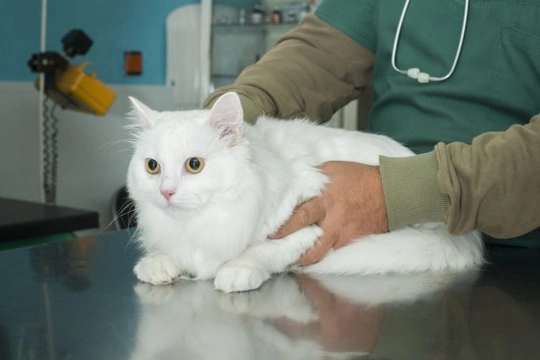
How to make visits to the vet less stressful for your cat
Visits to the vet, even for routine treatments and checkups, can be fraught with stress for both the cat and the cat owner alike, and often take cats far outside of their comfort zones.
Even before you get to the actual examination and treatment itself, your cat has to contend with being caught, being enclosed within a carrier, travelling in the car, sitting in the waiting room, and seeing other people and possibly also dogs at close range. All of this happens while they are trapped within their carrier and cannot back off, and will be enough to stress out even the most laid back of cats!
While the chances are that your cat is never going to actively enjoy their visits to the vets, there are several steps that you can take to make their visits rather less stressful and as smooth as possible, and reduce their fear of the whole procedure.
Read on to learn about making veterinary visits less stressful for your cat.
The carrier
- Make sure that your cat carrier is an appropriate size for your cat- it should be able to hold them comfortably with room to turn around, but also be small enough to make them feel secure.
- Carriers that load from the top rather than the front tend to be easier to use and require less pushing to get your cat into them!
- Try to get your cat used to the carrier prior to travelling, and encourage them to get into it willingly or for a treat if possible rather than scooping them up and unceremoniously pushing them into it, as this will put your cat out of sorts before you even get going!
- If your cat is stressed or nervous when in the carrier, reduce the outside stimulus that they are exposed to by covering the carrier with a blanket or large towel to help to keep them calm.
- Consider using a cat-friendly pheromone spray such as Feliway or Felifriend within the carrier in order to make the environment less threatening and more appealing to your cat.
The car journey
Try not to make your cat’s first experience of the car be the day that they go to the vet! If you can get your cat used to being carried safely in the car in their carrier before you actually need to take them anywhere, they will find it more familiar and less alarming on the occasions when they do actually need to go somewhere.
Always secure your cat’s carrier into the car if possible in order to protect against accidents, such as by holding their carrier in place with a seatbelt. Drive with your cat in mind; slowly and gently, avoiding sudden stops and swerving. It is important to get to the surgery in good time and not to rush your trip, but at the other end of the spectrum, do not set out so early that your cat will be waiting in their carrier for a protracted period of time once you get to the surgery.
If you do arrive well in advance of your appointment time, your cat will probably prefer remaining within the car rather than sitting in the waiting room of the practice until it is time for their appointment.
At the surgery
Let the receptionist know that you and your cat have arrived for your appointment, and find out from them where you should wait. Try to keep your cat as far away from other animals, particularly dogs, as much as possible. Other owners might wish to strike up conversation with you, which is fine, but try to discourage them from speaking to your cat as this is additional stimulus that your cat could do without, no matter how kindly it is meant!
Talk to your cat if they are distressed, and keep their carrier covered. Never, under any circumstances, open your cat’s carrier or take them out of the box until you enter the examination room and the vet tells you to, just to be on the safe side!
In the examination room
However scaredy your cat, they are going to have to come out of their box! Let your vet know before your cat comes out if they are likely to be particularly scared, wriggly or even aggressive, as this will help your vet work out how best to handle them.
Lift your cat out of the carrier smoothly, and let the vet conduct their examination. Talk to your cat to reassure them and keep them calm, but do not hold or handle your cat or get in the vet’s way while they are conducting their examination. If your vet feels that they would be able to examine your cat better without you present or with the assistance of a veterinary nurse, let them do this, as it will probably cause less stress and be much faster for your cat!
Always ensure that your cat is secured back into their box before you leave the room after the examination, and cover the box over again before you stop at the reception desk to pay, and continue your journey home.



